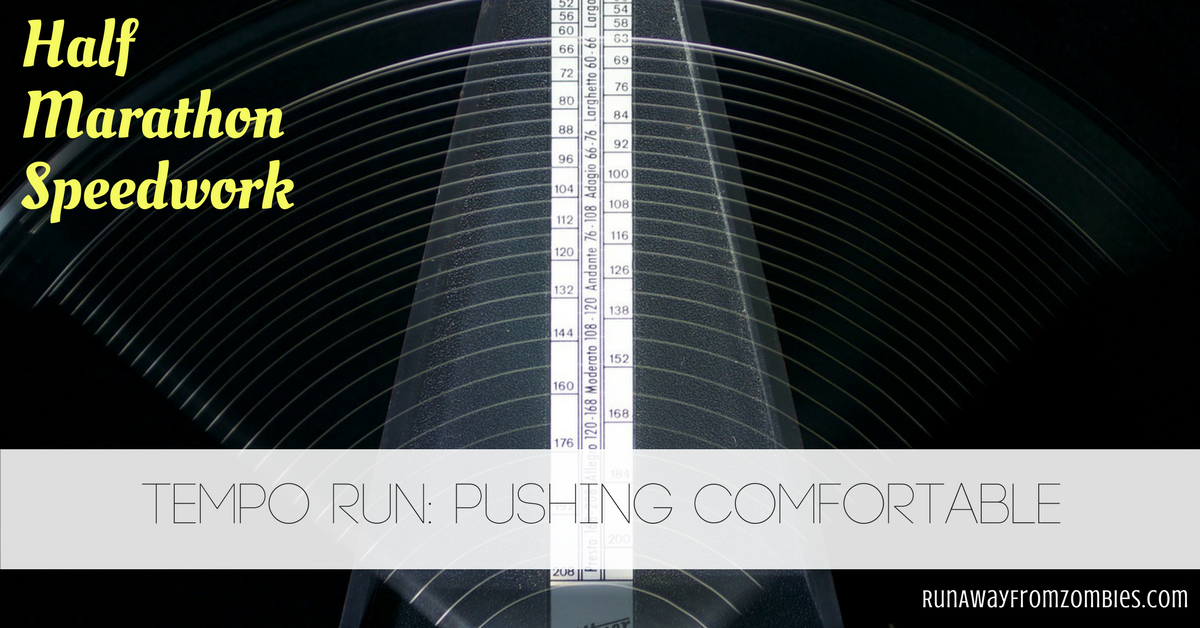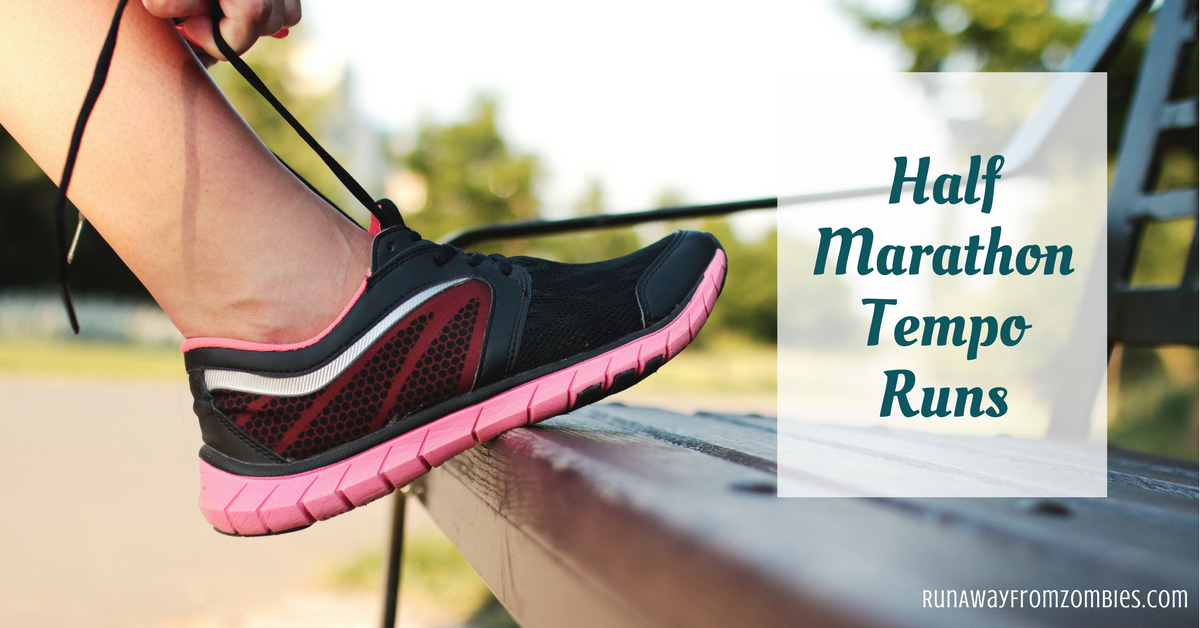 Tempo runs (or lactate-threshold runs) are difficult to explain, but easy to include in your running program.
Tempo runs (or lactate-threshold runs) are difficult to explain, but easy to include in your running program.
They’re the secret sauce to running faster for many distances. And, I especially like them for half marathons.
By running “comfortably hard” in a tempo run, you’ll train yourself physically and mentally for the half marathon.

What is a tempo run?
Tempo runs have to do with your lactate threshold (the point when blood concentration of lactate begins to build up exponentially from glucose metabolism).
At/above your lactate threshold, your body is working so hard that lactate begins to accumulate in your blood at a faster rate than it’s removed. Metabolic wastes accumulate, fatigue sets in, and you’re left with thoughts that you’re possibly dying. Think about your 5K pace.
By skirting around that border of lactate threshold and practicing runs at or near that pace, you actually push back the threshold and gain a lot of benefits.
Tempo Run Benefits
- Pushes back your lactate threshold, which will mean you can run at a faster pace before fatigue sets in
- Increases your endurance, enabling you to run longer before fatigue sets in
- Mentally prepares you to run hard and controlled
A basic tempo run is 20-40 minutes at pace, not including warm up and cool down. Any longer than that is more like a race effort than a training run.
McMillan Running’s video on Tempo Runs
How do I figure out MY tempo pace?
Say, you entered a race that lasted for exactly 1 hour. What is the steady pace you’d pick to race that entire hour? That’s your tempo pace.
- Consider your most recent 10K time and pace. It might be a little slower or faster than that.
- 8 on a 1-to-10 effort scale (with conversation pace 5 and racing near 10)
- Faster than conversation pace, but still able to speak a few words
- 85-90% max heart rate (source)
I base my tempo-pace a lot on effort. I’m constantly checking in with myself: “Could you run like this for an hour?” and I adjust accordingly.
Where tempo runs fit into half marathon training
When training for a half marathon with a goal time, I like to prescribe:
- Many miles slower than goal pace to increase aerobic base/endurance
- Specific miles at goal pace so you know how it feels and can find that groove in a race
- Some miles faster than goal pace to teach you hard effort and control
Since tempo pace is typically faster than your half marathon pace, they are a great way to get those faster miles with the added benefit of pushing around your lactate threshold.
Practicing a faster pace will strengthen all your running “gears” and help you hone in the correct speed for your goal race.
Also, tempo runs are great in your strength building phase and at the front of a race-specific training program. Runners can benefit from running tempo runs weekly throughout the year as one of their non-conversational pace runs.

Tempo Run Variations for Half Marathoners
1. Progressive Introduction for Tempo Runs
1-2 miles at an easy pace to warm up, strides or drills, 15 minutes tempo, and 1-2 miles back at an easy pace for cool down.
Next week increase to 20 minutes tempo. 3rd week increase to 25 minutes tempo. 4th week cutback to 15 minutes tempo for active recovery.
2. Negative Split Tempo
Practice running hard on the back half of a race.
Run the first half of your run at easy conversation pace. Run the last half at tempo pace. Cool down appropriately. Total: 30-80 minutes.
3. Tempo Intervals
Break your tempo run into intervals. Blood lactate levels tend to stay the same even when you add in short breaks into your running.
Coach Jack Daniels calls these cruise intervals.
Example: 1-2 miles warm up, 3 x 10 min tempo with 2 min easy running in between, 1-2 miles cool down. You could do 3 weeks of 10 minute intervals, an active recovery week, followed by 3 weeks with 15 minute intervals.
Further reading
- Strength Running: A Step-by-Step Guide to Tempo Runs
- Runner’s World: Your Perfect Tempo
- Running Fit: Tempo Runs





Leave A Comment